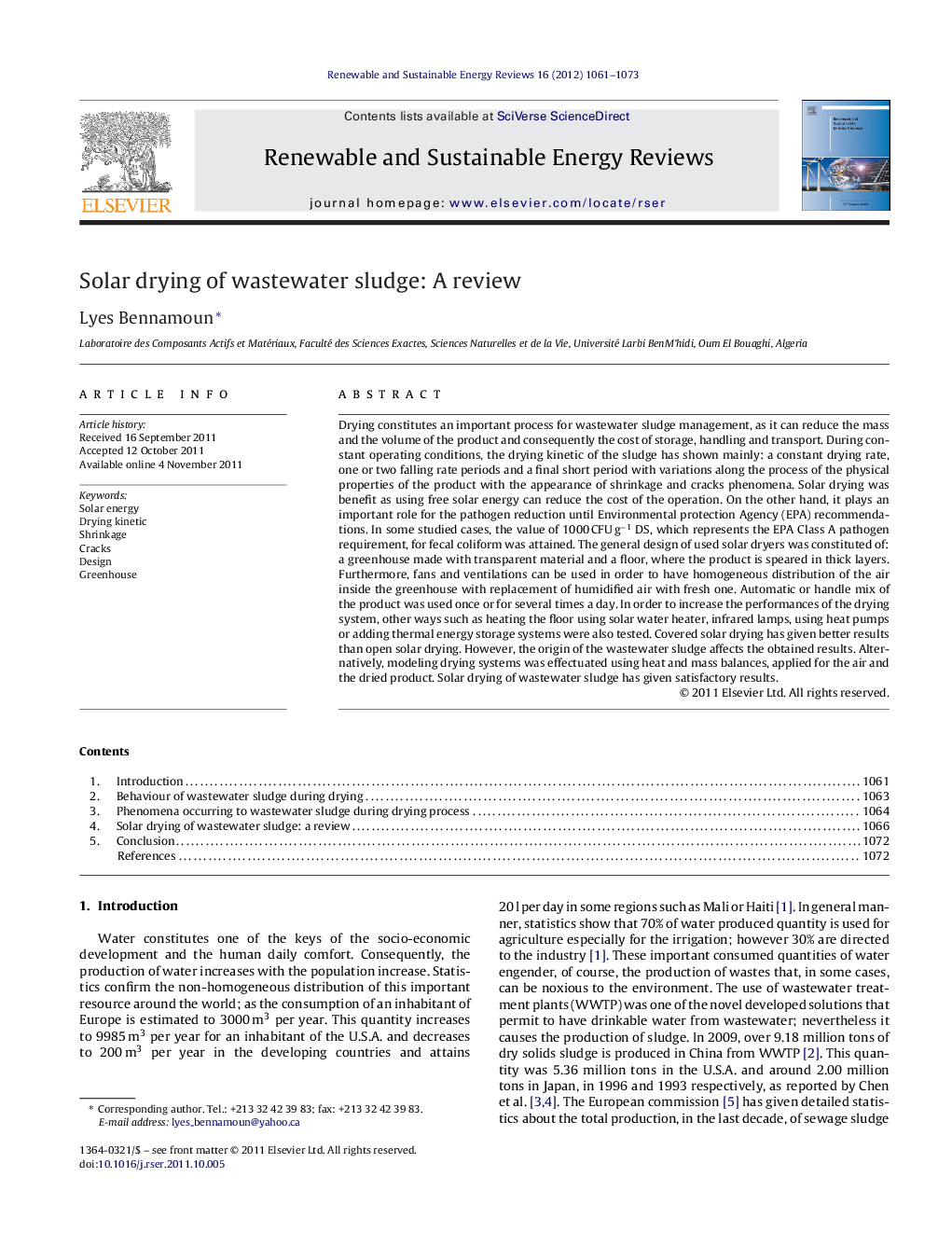| Article ID | Journal | Published Year | Pages | File Type |
|---|---|---|---|---|
| 1751325 | Renewable and Sustainable Energy Reviews | 2012 | 13 Pages |
Drying constitutes an important process for wastewater sludge management, as it can reduce the mass and the volume of the product and consequently the cost of storage, handling and transport. During constant operating conditions, the drying kinetic of the sludge has shown mainly: a constant drying rate, one or two falling rate periods and a final short period with variations along the process of the physical properties of the product with the appearance of shrinkage and cracks phenomena. Solar drying was benefit as using free solar energy can reduce the cost of the operation. On the other hand, it plays an important role for the pathogen reduction until Environmental protection Agency (EPA) recommendations. In some studied cases, the value of 1000 CFU g−1 DS, which represents the EPA Class A pathogen requirement, for fecal coliform was attained. The general design of used solar dryers was constituted of: a greenhouse made with transparent material and a floor, where the product is speared in thick layers. Furthermore, fans and ventilations can be used in order to have homogeneous distribution of the air inside the greenhouse with replacement of humidified air with fresh one. Automatic or handle mix of the product was used once or for several times a day. In order to increase the performances of the drying system, other ways such as heating the floor using solar water heater, infrared lamps, using heat pumps or adding thermal energy storage systems were also tested. Covered solar drying has given better results than open solar drying. However, the origin of the wastewater sludge affects the obtained results. Alternatively, modeling drying systems was effectuated using heat and mass balances, applied for the air and the dried product. Solar drying of wastewater sludge has given satisfactory results.
